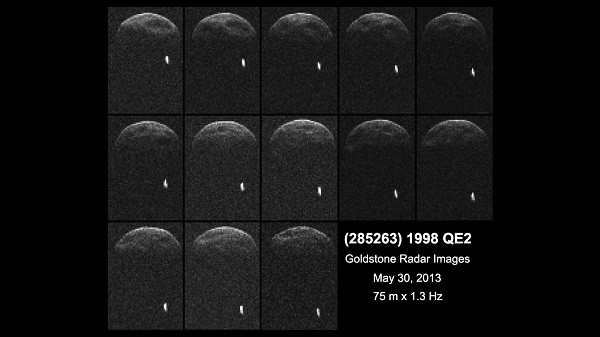
A giant asteroid measuring 2.7 km in diameter safely zipped past the Earth on Friday, according to NASA.
Asteroid 1998 QE2 made its closest approach to Earth at 4:59 p.m. EDT (around 2 a.m. IST), when the space rock was located within 5.8 million kilometers (3.6 million mile) distance from Earth. Earlier, scientists had said that there would be no chance of the asteroid's impact on Earth.
The distance between the space rock and the Earth was about 15 times the distance between Earth and the moon.
"It's a big one. And there are very few of these objects known - there are probably only about 600 or so of this size or larger in near-Earth space," Prof Alan Fitzsimmons, an astronomer at Queen's University Belfast, told BBC.
"And importantly, if something this size did hit us one day in the future, it is extremely likely it would cause global environmental devastation, so it is important to try and understand these objects," he said.
The 1998 QE2 asteroid, which was discovered on 19 August 1998 (that's why it is called 1998 and Q stands for the month of August), was so large that it has a moon, or a satellite, orbiting it. Using the 70-meter Deep Space Network antenna at Goldstone, Calif., NASA scientists obtained the radar images of the asteroid on 29 May, which suggested that the space rock is a binary asteroid and has a rotation period of less than four hours.
According to NASA, about 16 percent of asteroids that are large (about 200 meters or more) are binary or triple systems. The radar imagery of the asteroid also suggested that the asteroid is relatively dark. It has several dark surface features that suggest large concavities.
The asteroid's flyby on Friday will be the closest approach for at least two centuries. The 1998 QE2 space rock will make its next flyby on 12 July 2028, but it will pass at a very safe distance of 73 million km (45 million miles).










